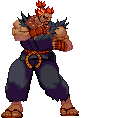| Line 2: | Line 2: | ||
<div style="border:solid;"> | <div style="border:solid;"> | ||
<div style="display: flex; flex-wrap: wrap; justify-content: space-around; width:100%;"> | <div style="display: flex; flex-wrap: wrap; justify-content: space-around; width:100%;"> | ||
<div style="min-width:200px; flex-grow:1;><center> | <div style="min-width:200px; flex-grow:1;"><center> | ||
Far Standing Jab <br> | Far Standing Jab <br> | ||
st.{{LP}} | st.{{LP}} | ||
| Line 8: | Line 8: | ||
A punch. | A punch. | ||
</center></div> | </center></div> | ||
<div style="flex-grow:1; flex-basis: | <div style="flex-grow:1; flex-basis: 75%;"> | ||
{{User:Shiburizu/sandbox}} | {{User:Shiburizu/sandbox}} | ||
</div> | </div> | ||
Revision as of 21:28, 21 December 2020
Flex attack template sandbox
Game agnostic workflow:
- Make a "character page" and a "data" page exclusively for them.
- Write out a section of tables that apply to one move on the data page.
- Set up a move template on the main character page: Add a picture, transclude the section for that move on the data page, and add a description.
- Rinse and repeat for all moves. This separates extensive data sheets from extra fluff related to the presentation, while making both sides easier to edit.
Fields:
- Name: move name.
- Input: input notation i.e. st.

- Image: filename of the relevant image.
- Caption: short description below image.
- Desc: longer form description. Could be transcluded from data page?
- Data: Data page section with tables to fill.
